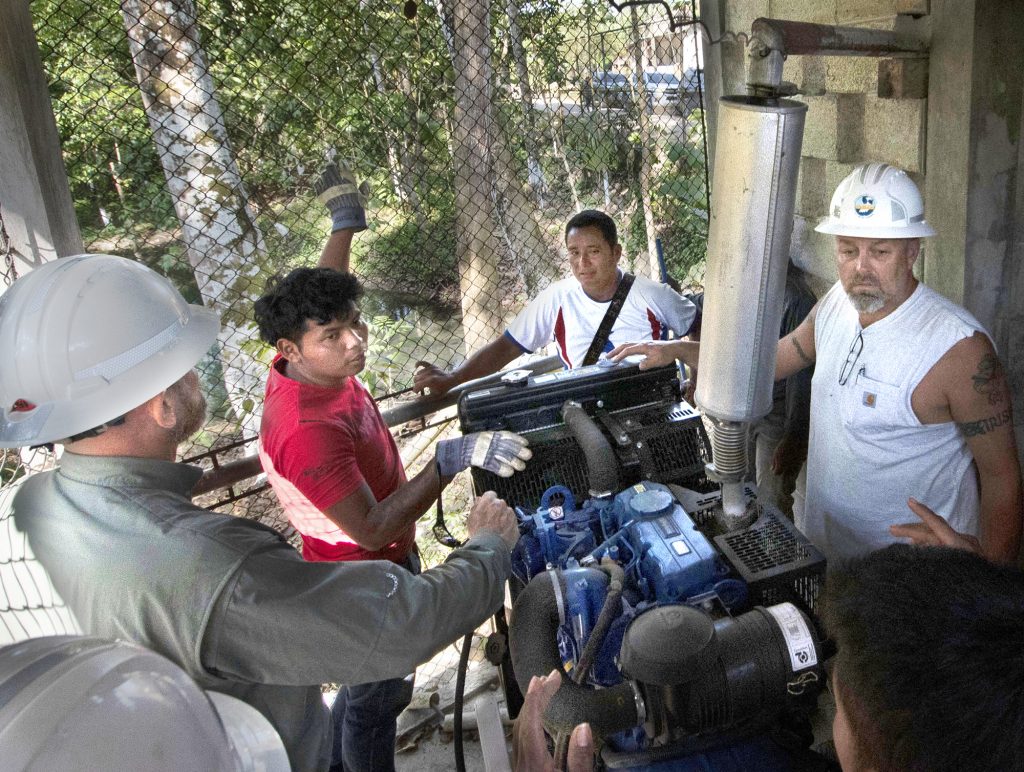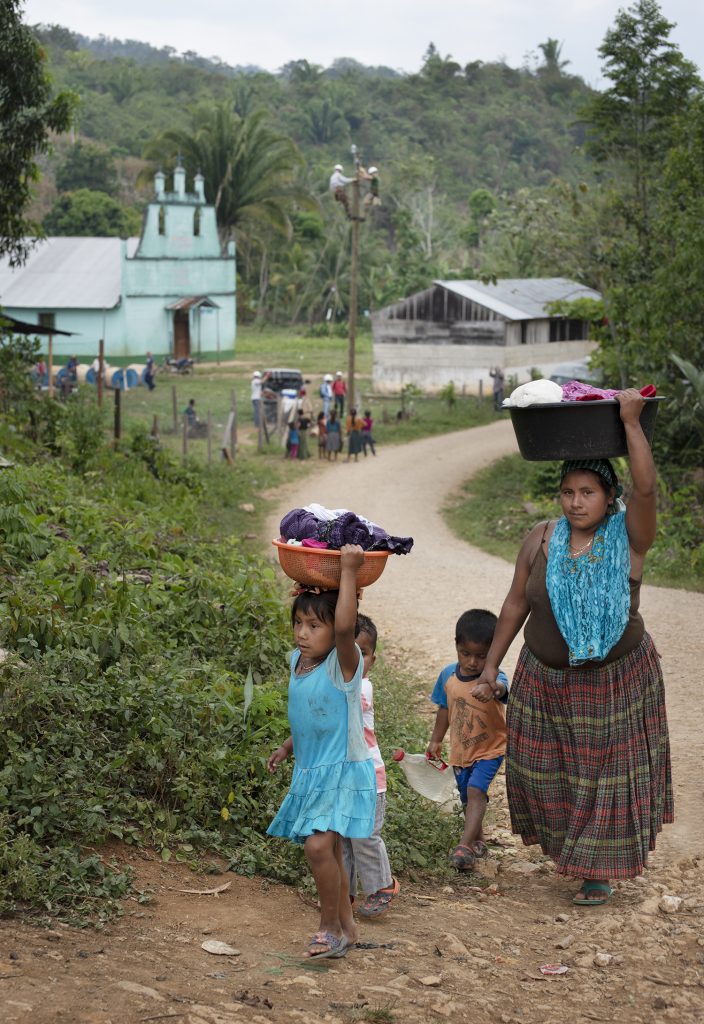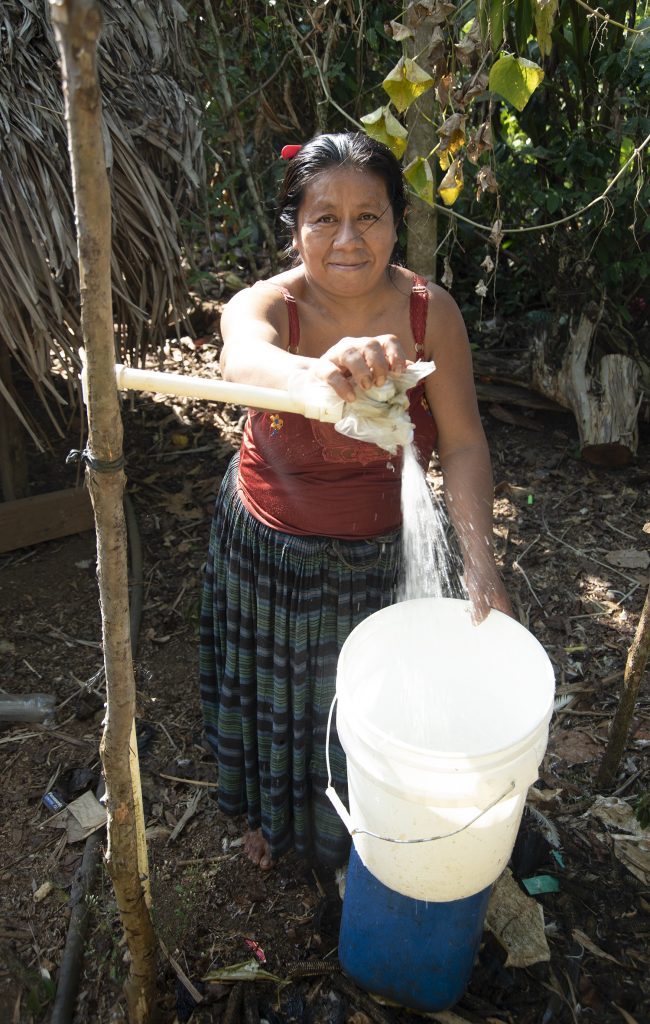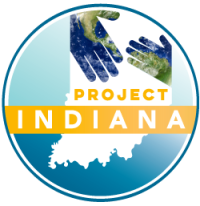Seeing needs; meeting needs
Water and electricity, they say, don’t mix.
The “they” who say that, fortunately, didn’t accompany Project Indiana’s 2019 trip to Guatemala.
Fourteen Indiana electric cooperative linemen and four project coordinators and support staff members spent two weeks last spring building power lines to the village of San Jacinto, and wiring homes and buildings. The day after turning on electricity in the village, they also fixed a water pumping station that had been inoperable for several months.
“I first learned they had a water source when I went down there to help plan the job in November of 2018,” said Jamie Bell, director of engineering at Greenfield-based NineStar Connect, who helped coordinate and supervise the project. “It wasn’t until after we started the actual construction on the project that we found out they had issues with the pump.”

The pump, which had been installed a few years earlier in a small pumping house beside the village’s water source, a spring-fed stream that flowed alongside the only road into town, had been out for months. A question arose about who was responsible to repair it: the village or the municipality of Chahal, which built and owned the pumping station. (The municipality is akin to county government in the United States.) So, it sat unrepaired.
The pump was electric, but its power source was the direct current of a diesel-fueled generator. In the months it had been down, the 12-volt battery for the generator engine had also disappeared.
With no pump, the villagers — mostly women and children — had to return to the ways before the pump was built: walking down to the stream to collect water emerging from the spring, and to bathe and wash their clothes amid the pools and the rocks.
“One of the Guatemalan guys with me asked if I could go down to help him with the pump,” said Joe Banfield, apprenticeship training program director with Indiana Electric Cooperatives (IEC) who also served as a project supervisor. He said the Guatemalans who speak the native Mayan language, Q’eqchi and Spanish, couldn’t understand some of the pump’s controls and instructions because they were written in English.
It was another example of the line crews seeing a need — and meeting the need.
Mixing electricity and water

“Project Indiana: Empowering Global Communities for a Better Tomorrow” is a non-profit organization formed by Indiana’s electric cooperatives with the vision of bringing electricity to developing rural communities around the globe and providing other ongoing support for the residents there to enjoy better, healthier lives.
The March 24 – April 9, 2019 trip to San Jacinto was the Indiana electric cooperatives’ fourth trip to Guatemala.
- In August 2012, 28 Hoosier lineworkers from 17 co-ops spent four weeks working across mountainous terrain near Guatemala’s northwestern Mexican border to bring electricity to 184 homes, a church and a school in three villages.
- In April 2015, 14 lineworkers battled extreme heat and the rugged land to bring electricity to 164 homes, a school and a church in an area not far from San Jacinto.
- And, in 2017, 14 lineworkers endured temperature extremes to power 68 homes, a school, a church and a health clinic in high altitudes in western Guatemala.
The 2019 project in eastern Guatemala extended power lines into and throughout San Jacinto. The project included basic wiring of a circuit box, light sockets and outlets for some 90 homes, two churches, a school campus and the water pumping station.
In just under two weeks, they completed the building project and flipped on the circuit. With the electrical portion of the project complete, and just minor tweaks to make, they spent their last full day in San Jacinto with their attention turned toward the water works. They purchased the relatively inexpensive part needed to get the pump working and a new battery, and they fired it up. Water once again flowed from the village’s water source throughout the village via its rudimentary plumbing system of buried PVC pipes. The plumbing terminated at spigots beside the village huts and homes.
“It was still just stream water but having it pumped and available at their home had to be such a wonderful convenience. And then to lose it? These villagers displayed the patience of Job as they just quietly went about their daily lives waiting for it to be fixed,” noted Richard Biever, senior editor at IEC, who traveled with the crew.
“I cannot imagine how hard that had to be to make even one trip a day down to the stream to do laundry or collect water. And then tote the wet clothes and containers full of water back up those steep rocky hills, sometimes with two or more children in tow?” he added. “Their physical and inner strength is really inspiring.”
“I think they are used to doing whatever it takes to complete a task with their resources,” noted Bell. “They are pretty good problem solvers. Hard work never seemed to slow them down.”
Getting better

The afternoon the water started flowing again, a middle-aged woman was leaving her home with a basket of laundry on her head. She was about to begin the half mile slog down a rocky dirt road past the village school, up a hill, then down an even steeper hill to the stream. Piloting a dust-covered SUV, Hugo Arriaza, a Project Indiana contractor from Guatemala, along with two Project Indiana staffers, pulled up beside her. In Spanish, he asked her to check her water spigot. She called her daughter out from the house and Arriaza repeated his request.
The daughter ran around the back side of the home and then quickly returned, telling Arriaza and her mom the water was back on. The woman expressed thankfulness to Arriaza and the Hoosiers. She then went into the home and returned with a bag of freshly-ground cacao — cocoa — that she gave to Arriaza. It was a gift of thanks for restoring the water…saving her innumerable trips down to the stream and back.
It was just part of the long-term partnership Project Indiana is developing with the Guatemalan people.
“Now that we have brought electricity, it is more efficient to use an electric pump than a diesel engine,” said Ron Holcomb, a Project Indiana director, and CEO of Tipmont REMC who also was on the 2019 trip. Converting the pump to one using the alternating current from the power line Project Indiana ran to the pumping station is just one of the first improvements he saw to come.
“We want them to realize we’re trying to help their way of life — along with getting electricity,” said Bell. “You could say electricity just got us there. But then we found other opportunities to help their lifestyle.
“Now they have water again. And that’s just a stepping stone. It is up to them now; they have to do what it takes to make the most out of their situation,” Bell added. “From here on out, things are just going to get better and better.”
